Here are illustrations of what I do in the shop.
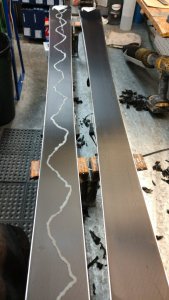
Put the wax on frugally. Only practice will let you know what the right amount is. If you have to scrape a lot of wax off your side edges or sidewalls, you are applying too much.
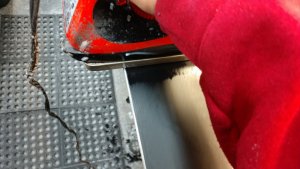
The first pass from tail to tip. It spreads the wax across the ski and warms the ski. If you look closely, you'll see the line of dripped wax still is slightly visible. Note the slick is about 25 mm long following the iron which is moving away from the camera.
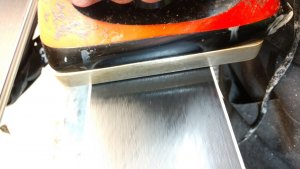
The 2nd (or return) pass goes from tip to tail. The ski is already warm, the wax mostly distributed already so the second pass does a nice job of completely melting and spreading the wax.
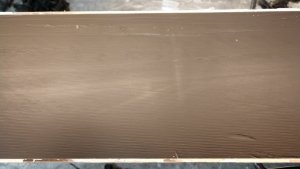
After two passes. Note that you can see the structure clearly through the wax. This is Holmenkol LF Universal, btw. It is somewhat hard and slow to melt. This was a casual wax job, not a customer ski; I didn't do any p-tex repair. Base grind and disc edging only.
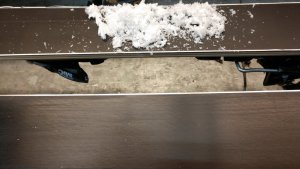
The bottom ski has been scraped with a very sharp scraper. I collected the wax to show how little actually comes off during scraping. That pile of scrapings is pretty insignificant. You need your scraper sharp and straight to get this kind of result. With this harder Universal wax, I use one edge of the scraper per ski, sometimes per pair of skis depending on how flat the bases are (not all waxing is done to just-ground bases).
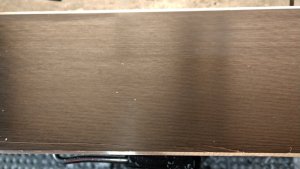
This is after first brush pass.
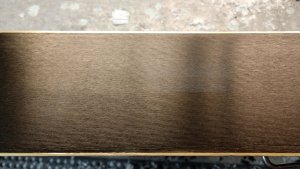
After final roto-brushing. The color variation from top to bottom is due to lighting for the most part. This ski is good to go although for racing, I would have done some more brushing. Even so, the structure is crisp and nearly wax free.
As you can see the difference between scraped only and brushed is pretty minor. You spend a lot of time brushing if you don't have a sharp scraper and pay attention to the areas that aren't getting well scraped.








